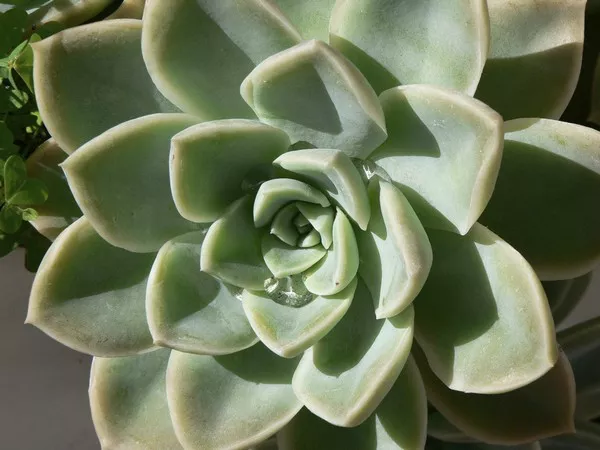Succulents have captured the hearts of plant enthusiasts around the world with their striking appearance and easy-care nature. One such captivating variety is the sunburst succulent (Sedum adolphii), known for its vibrant colors and delicate rosette formations. Propagating these beauties is not only an exciting endeavor but also an opportunity to expand your succulent collection. In this article, we delve into the world of sunburst succulent propagation, from understanding the plant’s characteristics to exploring various propagation methods.
Understanding Sunburst Succulents
Sunburst succulents, scientifically referred to as Sedum adolphii, are native to Mexico and belong to the Crassulaceae family. Their signature feature is the stunning blend of colors – ranging from golden yellow to orange-red – that adorn their fleshy leaves. This succulent is particularly favored for its ability to thrive in a variety of conditions, making it a popular choice for both novice and experienced gardeners.
1. Propagation through Leaf Cuttings
Leaf cuttings are a popular method for propagating sunburst succulents. This technique involves detaching a healthy leaf from the parent plant and allowing it to develop roots and grow into a new plant. Follow these steps to successfully propagate your sunburst succulent through leaf cuttings:
Select a Healthy Leaf: Choose a plump, mature leaf from the parent plant. Ensure that the leaf is free from damage or disease.
Allow the Leaf to Callus: Place the detached leaf in a dry location for a few days. This helps the wound where the leaf was removed from the plant to callus over, which reduces the risk of rot during propagation.
Plant the Leaf: Gently plant the callused end of the leaf into well-draining succulent soil. Insert it just deep enough to provide stability. Water sparingly to prevent over-saturation.
Provide Indirect Light: Place the planted leaf in an area with bright, indirect sunlight. Avoid direct sunlight, as it can lead to sunburn.
Root Development and Growth: After a few weeks, you will notice tiny roots forming from the base of the leaf. As the roots develop, a new rosette will emerge from the tip of the leaf.
Transplanting: Once the new plant has grown a few inches and has developed several sets of leaves, it can be carefully transplanted into its own pot.
2. Propagating through Offsets
Offsets, also known as pups, are smaller plantlets that naturally sprout from the base of mature succulents. Sunburst succulents occasionally produce offsets, making them an excellent source for propagation. Here’s how to propagate sunburst succulents using offsets:
Identify Offsets: Inspect the base of the parent plant for small offsets. These will appear as miniature rosettes growing close to the main plant.
Separate Offsets: Gently separate the offset from the parent plant using a clean, sharp knife or your hands. Ensure that the offset has some roots attached to it.
Allow to Callus: Place the separated offset in a dry location for a day or two to allow the cut surface to callus.
Plant the Offset: Plant the offset in a small pot with well-draining succulent soil. Water lightly and place it in an area with indirect sunlight.
Root Development and Growth: The offset will begin to establish its roots and grow new leaves. Keep the soil lightly moist but not overly wet during this stage.
Transplanting: Once the offset has grown sufficiently and has its own established root system, it can be transplanted into a larger pot.
3. Water Propagation for Sunburst Succulents
Water propagation is another intriguing method to propagate sunburst succulents. This method involves allowing the plant’s leaves to grow roots in water before transferring them to soil. Follow these steps for successful water propagation:
Select Healthy Leaves: Choose healthy leaves from the parent plant and gently remove them, ensuring no damage occurs.
Place in a Container with Water: Place the leaves in a container with enough water to submerge the base of the leaves but not the entire leaf. Use a clear container to observe root growth.
Change Water Regularly: Change the water every few days to prevent the growth of mold or bacteria. This ensures a clean and conducive environment for root development.
Wait for Root Growth: Over the course of a few weeks, you will notice tiny roots emerging from the base of the leaves.
Transfer to Soil: Once the roots are a few centimeters long, carefully transplant the leaves into well-draining succulent soil. Water lightly and provide indirect sunlight.
Root Development and Growth: The leaves will continue to develop roots in the soil and eventually sprout new rosettes.
4. Caring for Propagated Sunburst Succulents
Regardless of the propagation method you choose, caring for your newly propagated sunburst succulents requires attention to detail. Here are some essential care tips:
Light: Sunburst succulents thrive in bright, indirect sunlight. Avoid exposing them to harsh midday sun, as it can lead to sunburn.
Watering: Allow the soil to dry out completely between waterings. Overwatering can lead to root rot, which is detrimental to succulents.
Soil: Use a well-draining succulent or cactus mix to ensure proper aeration and drainage for the roots.
Temperature: These succulents prefer temperatures between 60°F to 80°F (15°C to 27°C). Protect them from extreme cold or heat.
Fertilization: Feed your propagated succulents with a diluted, balanced liquid fertilizer during the growing season (spring and summer) to support healthy growth.
Conclusion
Propagating sunburst succulents is a rewarding experience that allows you to witness the growth and development of new plants. Whether you choose leaf cuttings, offsets, or water propagation, each method has its own unique charm. By following the steps outlined in this comprehensive guide, you can successfully propagate these vibrant succulents and expand your collection with flourishing, colorful plants. Remember to provide the right care and attention as your propagated sunburst succulents continue to thrive and beautify your indoor or outdoor spaces.


